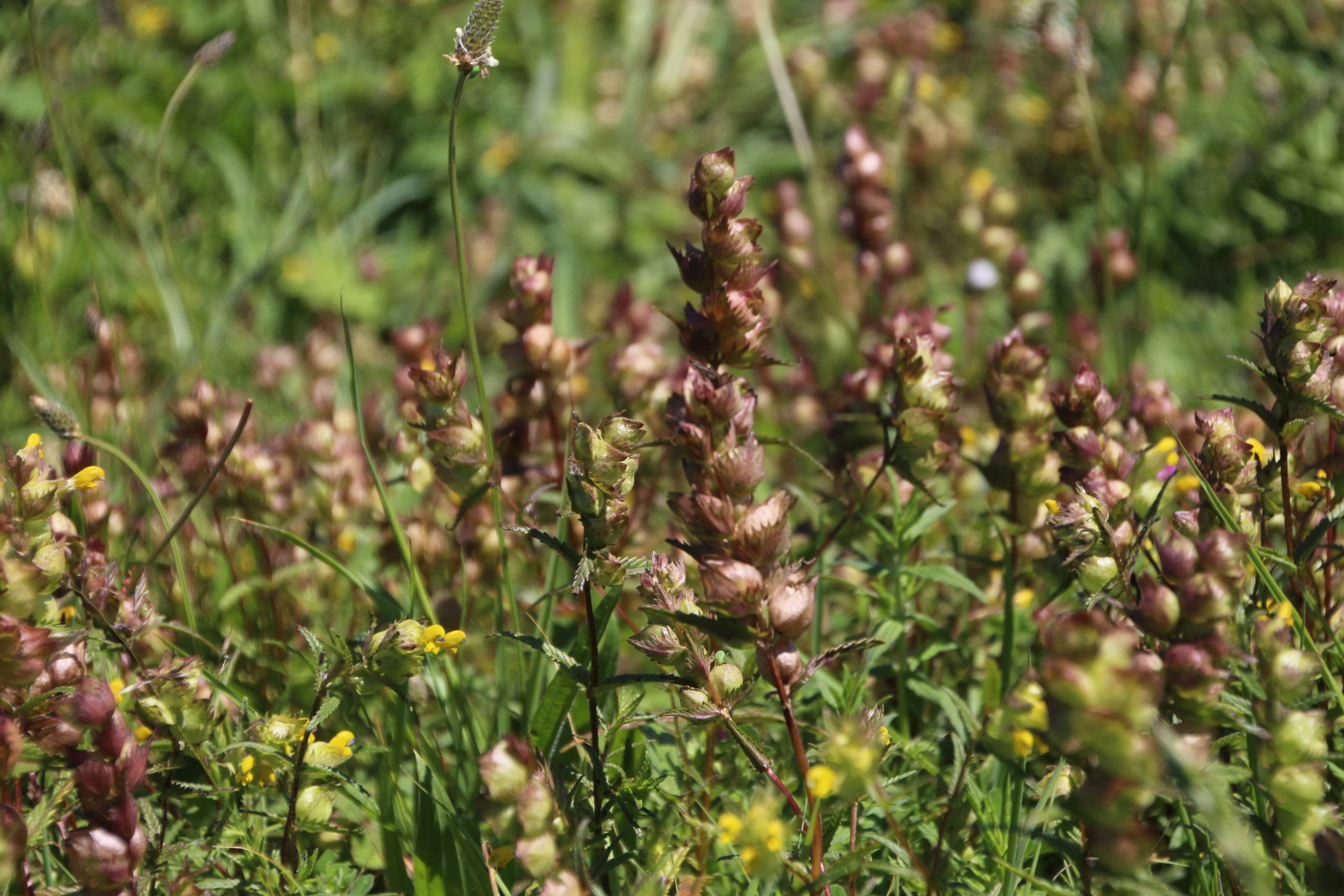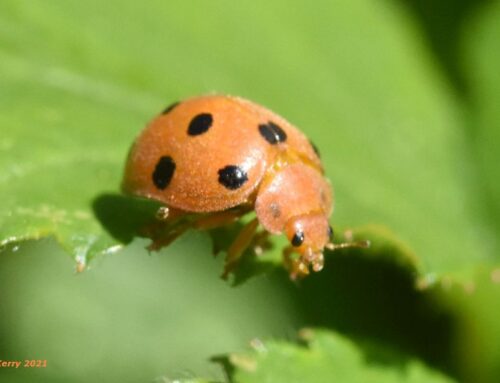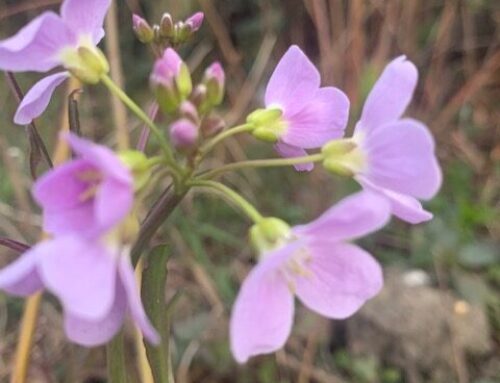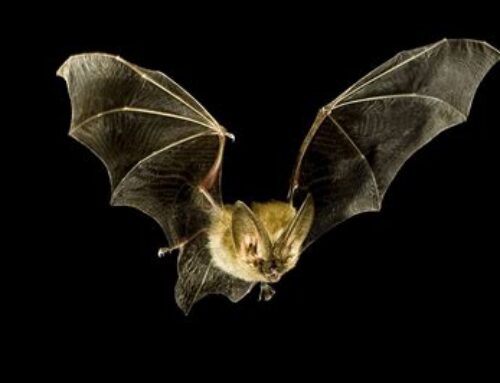Did you know that yellow rattle (Rhinanthus minor) is known as ‘the meadow maker’ or ‘nature’s lawnmower’? It could be the single most important plant you need to establish when creating a wildflower meadow!
In the dry chalk cliffs on the Sussex coast, some plants have long taproots designed to seek out the last bits of moisture from the soil. Other plants parasitise by locking roots and stealing from other plants. Yellow rattle is one such plant, a characteristic plant of the chalk grassland which blooms early and flowers through summer, especially often on the very edge of the cliff. On the underside of the leaves are tiny hydrothodes (pores) which excrete any surplus water. Through early Summer it happily flowers with Horseshoe Vetch, Birds’ foot trefoil, restharrow and wild mignonette. Later it continues with dropwort, centaury, clovers and viper’s bugloss. It’s inflated calyx is pale green in colour, and when filled with ripe seed, forms the rattle to be shaken in the breeze. The dry capsules are sometimes known as fiddle cases or in Scotland as “gowk’s siller” (fool’s silver)*
*(source Downland in Flower, W M Macleod)
The parasitic nature of the plant makes it really useful when planting a meadow. It is an annual plant and in early spring the seeds germinate and grow quickly. As their roots develop underground they seek out the roots of plants growing nearby, especially grasses. Once contact is made the yellow rattle draws water and nutrients from them, suppressing the growth of grasses by as much as 60%. In the resulting space, other flowers have room to grow.
If you want to plant yellow rattle, it is best planted by seed in the Autumn, after scarifying the earth first. However you can also plant plug plants in Spring.
In Autumn 2018 yellow rattle seed was sowed in Lewes on the Brighton road, A277, which is a county council highway and also on a verge in Malling Close. Both sites were scarified with donated time from Burleys but sadly none germinated – possibly because they were sown a little late (December 2018) and also there wasn’t a hard frost that winter, which is needed for germination. The two sites were left uncut in 2019 and cut and cleared in autumn 2019. There is hope that the seeds might emerge in 2020.
Valley Ponds area is a well-known and well-loved area of informal grassland and small lakes in the midst of the Valley on the west of the C7 road towards Southease.
The ponds are managed by Newhaven council, with assistance from Friends of Riverside Park volunteers. A meadow was planted at the western end of the site. The meadow didn’t provide a visual floristic display in 2018 as some of the stronger grasses and flowers are starting to dominate. For example, the display of ox-eye daisies has significantly reduced from 2017, a normal occurrence as ox eye daisy tends to grow well in the first 2/3 years in a new meadow because it likes the bare ground. Other seeds can take years to germinate and will be on completely different cycles.
This Spring it is planned to plant around 250 yellow rattle plugs into the exisiting wildflower meadow in Valley Ponds. this should help to manage the more competitive species and to continue to allow the meadow to develop. The site should then be monitored to see how the floristic diversity of the meadow now develops with the help of the yellow rattle.
There are also sites where Wildflower Lewes (WFL) sowed yellow rattle in the Autumn 2019 which will be left uncut, and monitored to see what wild flowers emerge. These were Jubilee Gardens, Winterbourne Hollow Triangle, Lynchets Malling Hill and Malling Close. These sites will now not be mowed throughout 2020 and will be monitored by wildflower lewes to see what wildflowers emerge. Seeds were collected locally by volunteers for the four mentioned sites.
In addition to above, Idverde (previously called Burleys) have planted yellow rattle plugs in Southover Grange wildflower patch in 2018 and 2019 and these are flourishing and spreading really well.
If you are planting some meadow maker, let us know how you get on!










